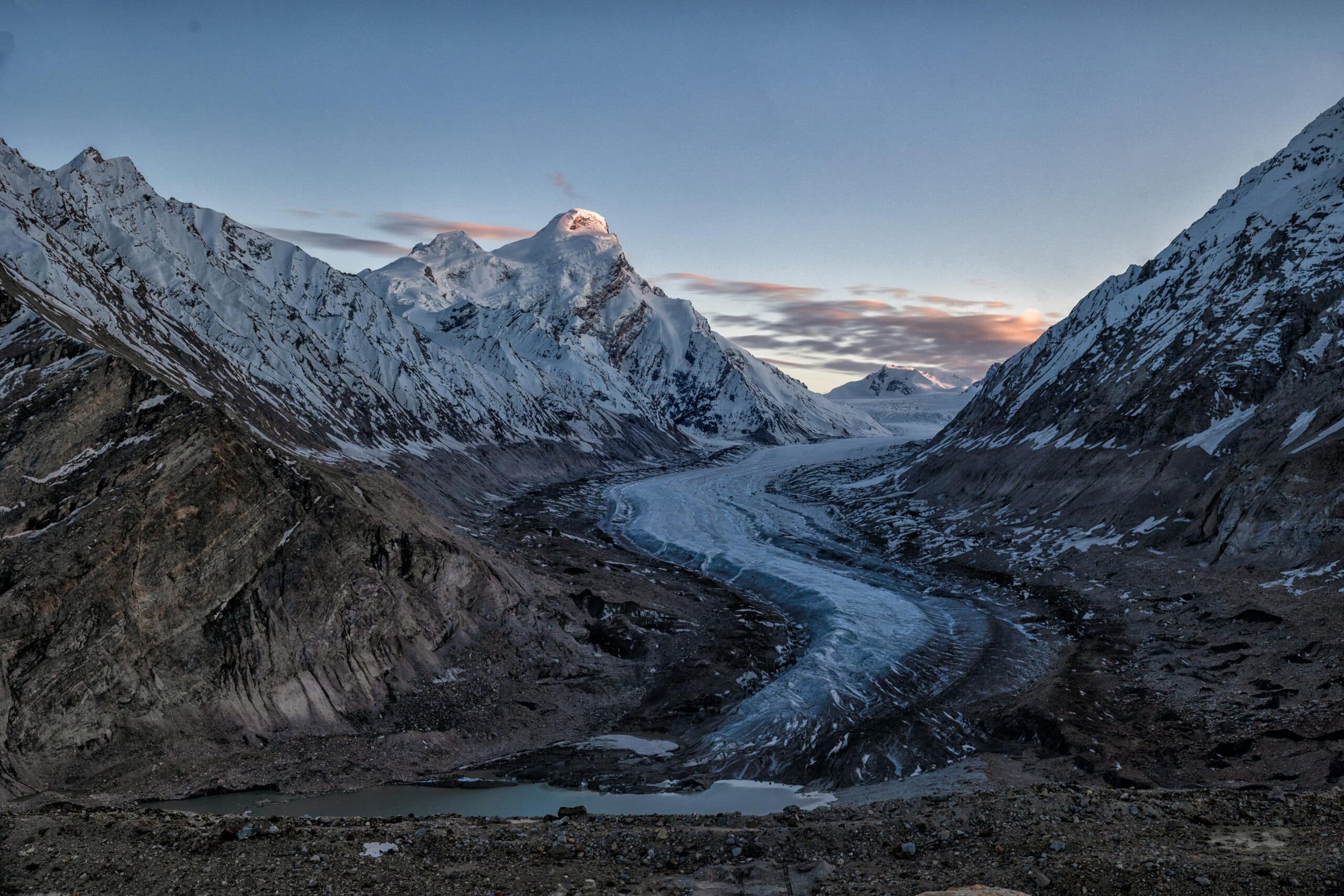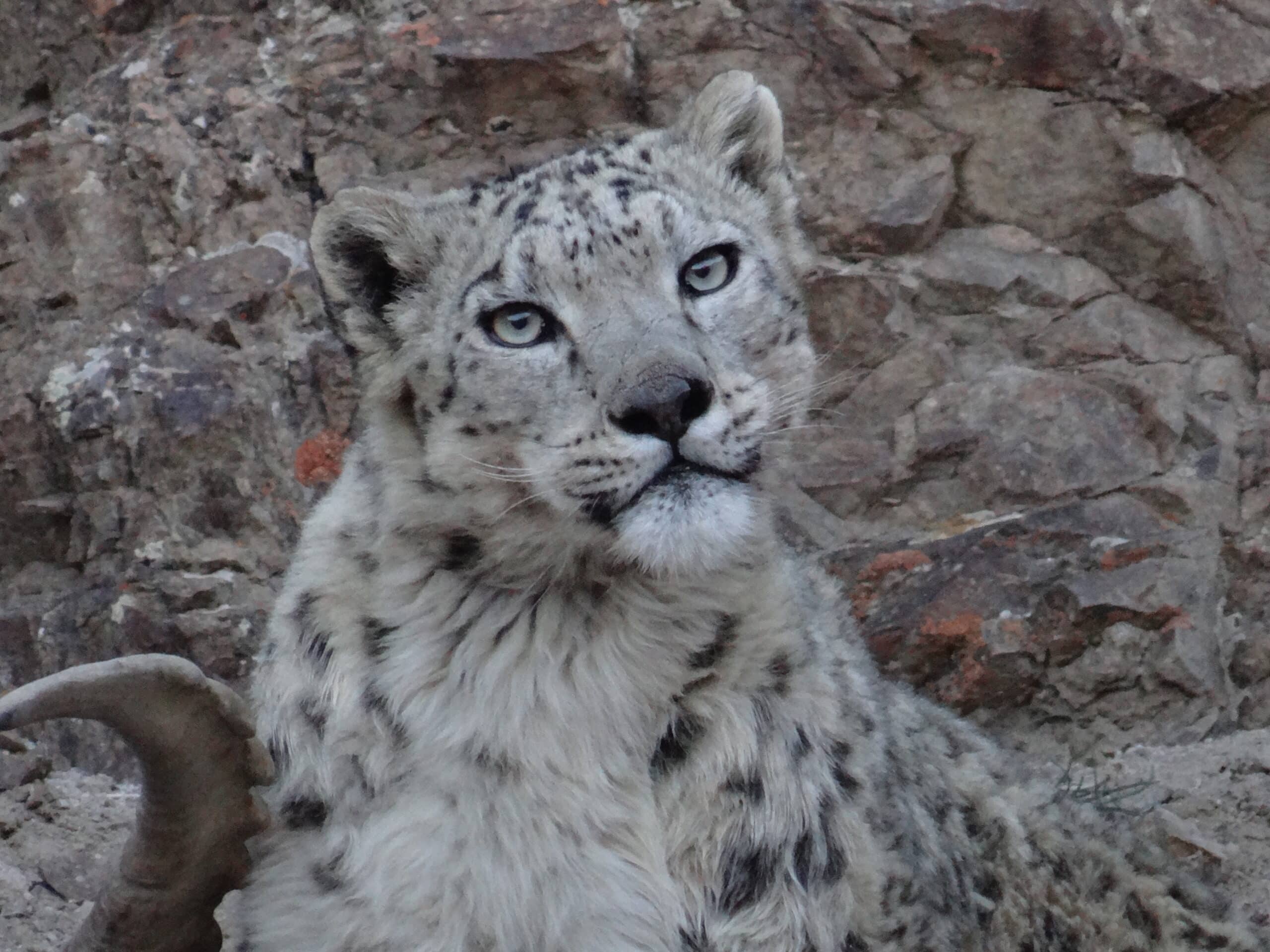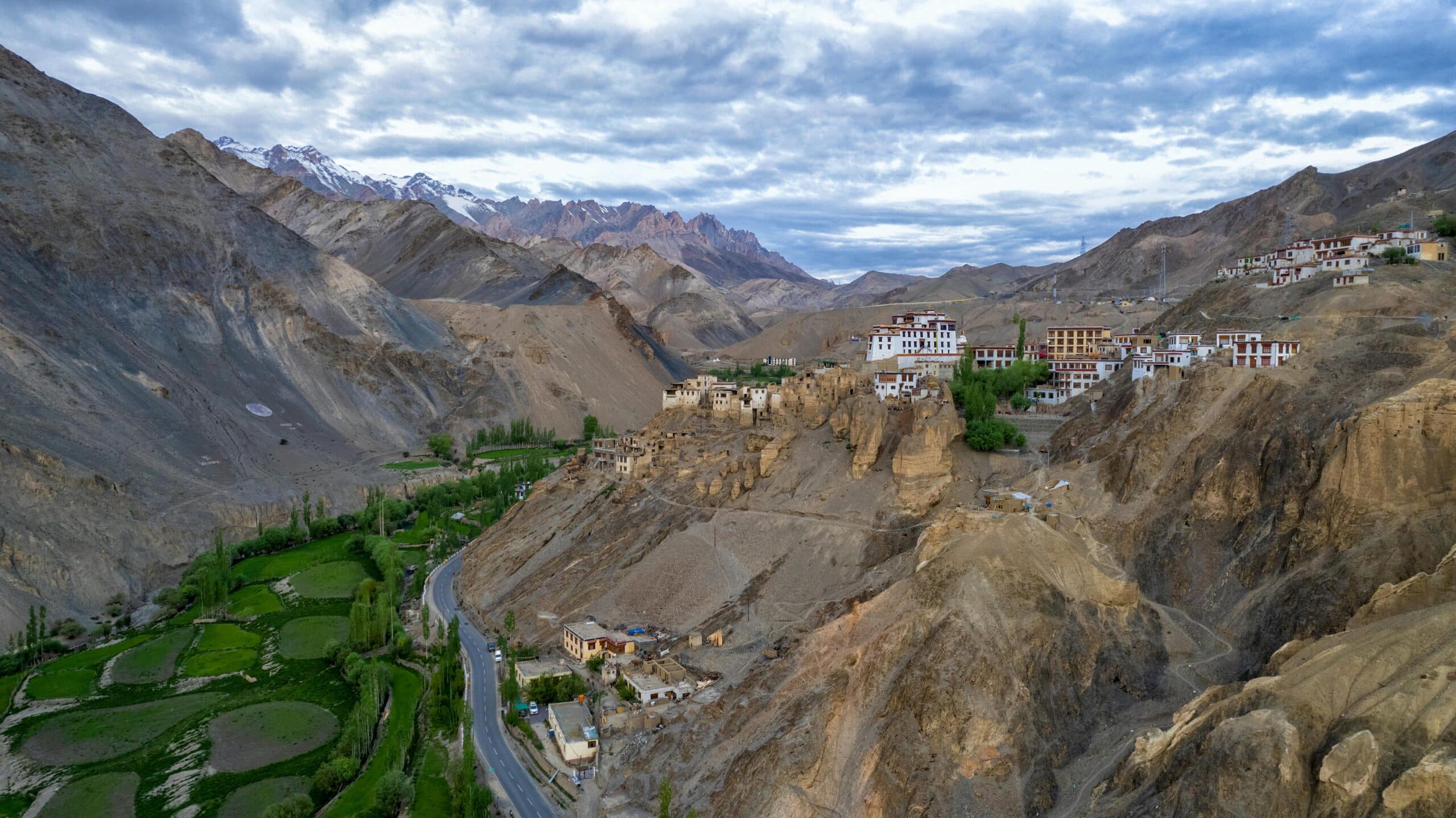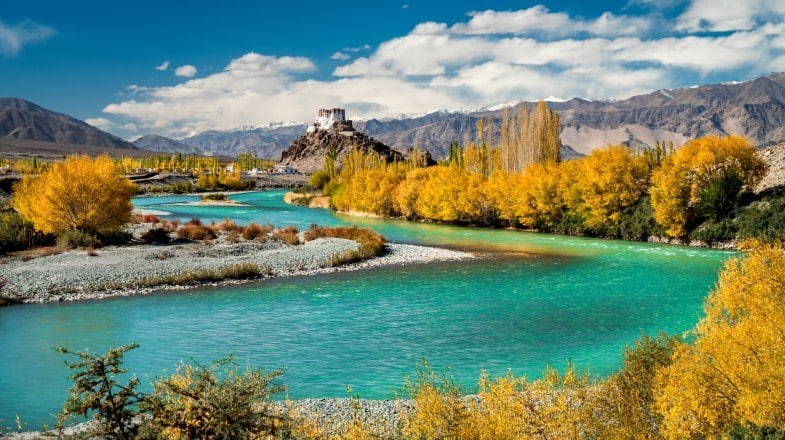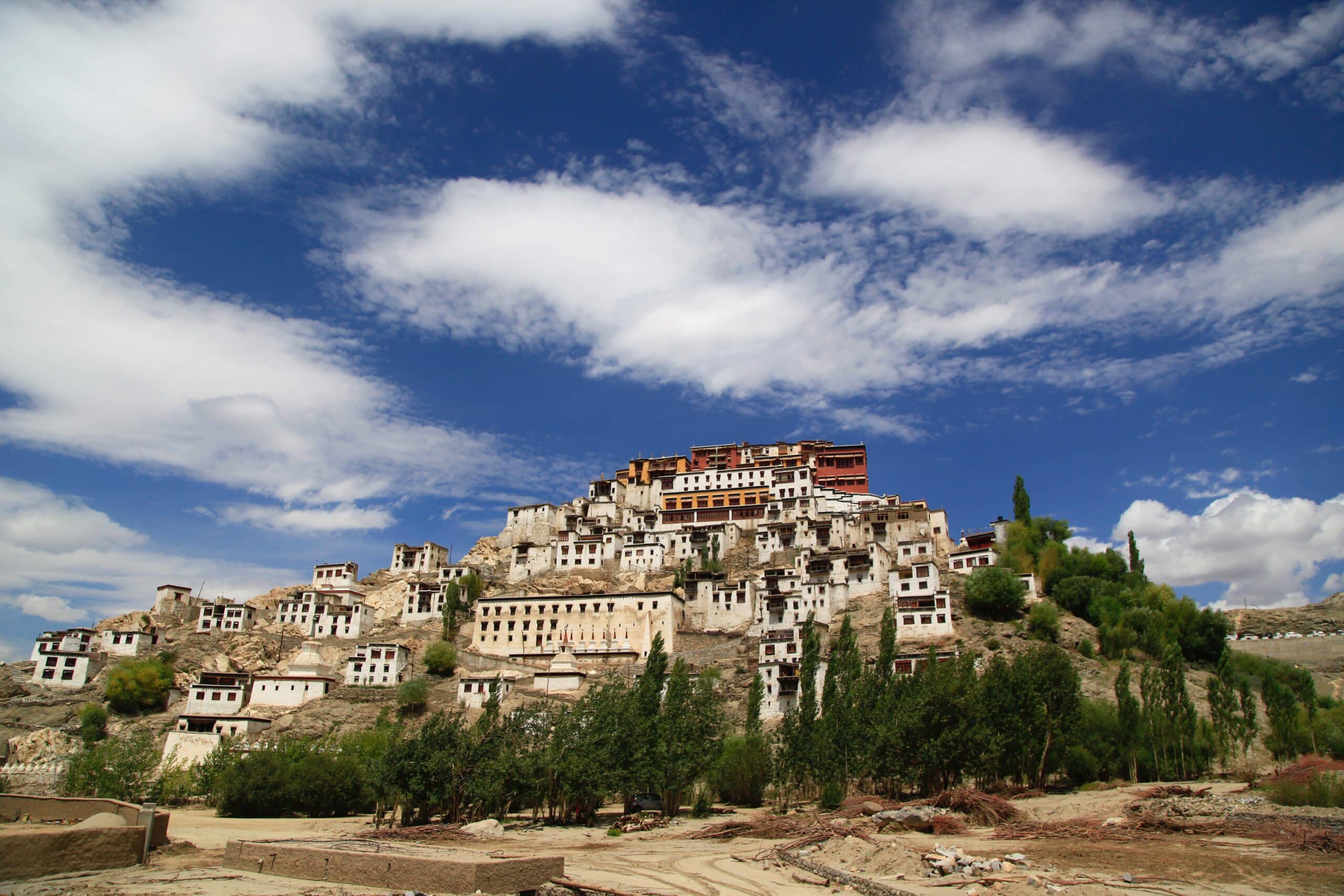- Transport Included
- Meals Included
- Hotel Included
- Pickup/ Drop Point: Leh/Leh
Ladakh The Land of High Passes

Expert Guidance
Research and Planning
Get acquainted with the geographical, climatic, and cultural attributes of Ladakh. Determine the optimal time for a visit based on weather and personal preferences; the summer months (May to September) are favored for milder weather and accessibility. Create a personalized itinerary, including must-see destinations and desired experiences with Trekup India.
Permits & Regulations
One need to obtain Inner Line Permits (ILP) to visit some restricted areas such as Pangong Lake, Nubra Valley, and Tso Moriri by obtaining them online or through Trekup India. Keep an eye on any changes in travel regulations, as they may be updated due to security or environmental reasons.
Acclimatization: To avert the onset of altitude sickness, it is crucial to acclimatize properly. Upon arrival in Leh, it is recommended to spend a couple of days allowing your body to adjust to the high altitude. This can be achieved by drinking an ample amount of water, refraining from engaging in strenuous activities during the initial days and considering the use of medications such as acetazolamide (Diamox) to facilitate acclimatization.
Pack Appropriately: Make sure to pack suitable attire for both hot days and chilly evenings. It’s important to bring layers since the temperatures can vary greatly. Remember to bring durable hiking shoes, sunscreen, shades, lip balm, and a sun hat to shield yourself from the sun. Don’t overlook important items such as medications, a first-aid kit, and water purification tablets. It’s crucial to show consideration for the customs and traditions of the local community.
Learning some localities: Acquire knowledge about the customs and culture of Ladakh for local traditions and etiquette. Prior to capturing images of individuals or religious locations, request consent.
Environmental Concerns: Help preserve the beauty of the environment by adopting sustainable practices during your travels. Reduce your waste by refusing single-use plastics and utilizing reusable water bottles and bags. Additionally, show respect for the wildlife and their habitats.
Medical Precautions: Be prepared for emergencies by taking necessary precautions such as packing a first-aid kit and staying informed about potential hazards in the area. Make sure you become acquainted with emergency contacts and medical as well as other significant towns. It is crucial to bring a well-equipped first-aid kit and have travel insurance that includes coverage for high-altitude trekking and any necessary medical evacuations.
Experience the Best: Spend some leisurely moments admiring the breathtaking scenery, monasteries, and distinct traditions of Ladakh. It is advisable to remain adaptable with your itinerary, given the unpredictable weather and road conditions in the area.
Sim and Network: When traveling to Ladakh, consider investing in a postpaid SIM card from BSNL, Airtel, or Jio for seamless roaming services. currently, BSNL has the best signal strength in the area. While internet connectivity is reliable in central Leh, it’s important to note that remote areas may have weak or no signals at all. To ensure uninterrupted service, we recommend subscribing to a BSNL postpaid SIM and bringing it with you on your trip.
Day Wise Detailed Itinerary
Day 01: Arrival in Leh (The capital city of Ladakh)
Today on your own you will board our flight from Delhi to Leh, and enjoy the best Himalayan view from your flight (for best views one should choose to sit on the left side of the aircraft when flying from Delhi to Leh. On arrival at Leh airport, met and received by Trekup India representatives and transferred to booked accommodation. On arrival check into the hotel, rest of the time at leisure, full day at rest, as you have traveled from a relatively low elevation to a high altitude, therefore to avoid altitude sickness acclimatization is highly recommended. In the evening on your own, you can choose to go and stroll in and around the local market to understand the locals, some basic language, and local cuisine.
Overnight stay at Hotel Meal: Dinner Only
Day 02: Leh (Choglamsar Village, Spituk Gompa, Shanti Stupa, Sankar Gompa)
This morning we have a full day to explore Leh. We will first visit Choglamsar, a beautiful village. It’s a breathtaking Tibetan refugee settlement that is known as a place for children as well as a handicraft center that is mostly devoted to weaving carpets. We’ll visit Spituk Gompa, founded during the eleventh century. It’s part of the Kadampa School, and later with time, it was absorbed by Dharmaraja Takspa Bum Lde Lama Lhawang Lotus, who brought to the stainless order that of Tsongkhapa in the region. The monastery’s museum boasts an impressive collection of ancient masks, antiquated arms, other icons, and Thangkas. We go through The Shanti Stupa, situated in Leh, symbolizing peace and harmony. On our next trip, we’ll visit Sankar Gompa. It is home to paintings and its murals depicting protector gods from The Four Quarters of Heaven, the Wheel of Life, and the Old Man in Longevity Sakyamuni Buddha and his 16 sages, the Buddhas of Benevolence, the 35. The murals portray an image of the Buddhist God of Compassion, the Avalokiteshvara, and Yamantaka (God of Death), The most impressive of which has 1000 heads, legs, and arms. There are about 20 monks at the Gompa. Evening we will stroll in the local market, mingling with locals and hopping into some local restaurants for a quick local snack (on direct pay). Later, return back to the hotel.
Overnight stay at Hotel Meal: Breakfast & Dinner Only
Day 03: Leh -Alchi (3,250 M10 725 feet) By Surface about 70 kms / 2hrs - Themisgang via Surface/Approx. 1hr.
The following morning, we set out for the Themisgang Enroute; we will stop to visit the Likir Monastery or Likir Gompa, a monastery part of the Gelugpa monastery, which is an integral part of Tibetan Buddhism. It was established through an effort by Lama Duwang under the guidance of the fifth Lhachen Gyalpo, the five-time ruler of Ladakh, Lhachen Gyalpo. The complex is home to numerous shrines. There are currently around 120 Buddhist monks. We then travel to Alchi, which is the place where we go to visit Alchi Monastery. Alchi Monastery is said to be the most famous and oldest monastery in the Ladakh region. It is run and administered by the Likir monastery. The monastery’s structure was constructed at the time of the year 1100 AD and was built by Rinchen Zangpo, who is a translator. The legend says that 32 wood carvers and sculptures from Kashmir were hired to construct the Gompa. Then, we will travel to Themisgang. enroute we will also stop to visit Pathar Sahib Gurudwara and Magnetic Hills. Evening at leisure.
Overnight stay at Hotel Meal: Breakfast & Dinner Only
Day 04: Tingmosgang - Lamayuru - Leh by surface 150 Kms 4-5 hours
In the morning, we’ll travel to visit Lamayuru Monastery or Yuru Gompa in the Kargil district on the Leh-Srinagar National Highway Road. It is considered one of Ladakh’s largest and oldest Buddhist monasteries. It is home to about 150 monks who reside there. It was initially composed of five structures dating from the past. The remaining four can be seen in the complex. Lamayuru Monastery is famous for its large collection of thangkas, paintings, scriptures, and statues of Buddha and other gods. After that, we will return to Leh on the way back. On the way, we’ll visit Rizong Monastery, also known as Yuma Changchubling, a Tibetan Buddhist monastery of the Yellow Hat (Gelugpa) sect. It is situated at the summit of a mountain on the northern bank of the Indus, just east of Alchi Gompa and Lamayuru. Lama Tsulim Nima founded the monastery in 1831. It is known for its strict rules and guidelines. It is frequently described as a ‘paradise’ to meditation. Rizong Gompa is home to approximately 40 monks from the Gelugpa order. The cave is located close to the monastery. Guru Padmasambhava was believed to be a mediator in this cave many years back. Within 2 kilometres of the monastery is a nunnery known as ‘Jelichun,’ called Chulichan, home to 20 nuns. After your visit then, drive to Leh. Evening at leisure. Stay in the hotel.
Overnight stay at Hotel Meal: Breakfast & Dinner Only
Day 05: Leh-Nubra Valley Surface of 125 kms approx 5-6 hours (highest motor-friendly roadway) - Riding on Double Hump Camels in Hunder
After breakfast in the morning, set off on a thrilling journey towards Nubra Valley crossing Khardungla Pass which is 18360 ft above sea level. It is among the most motor-friendly passes in the world. We will also visit Diskit Gompa created through Lama Sherab Zangpo in 1420 AD under King Dragspa’s reign. About 100 monks reside in the Gompa, a portion of Thiksey Monastery. After that, we’ll go on a tour along the Hunder dunes to meet and interact with the camel herders, discuss with them, and get to know their daily routines. We’ll then take a double hump camel ride (on direct pay). The remainder of the evening is left to relax and enjoy your leisure activities.
Overnight stay at Hotel Meal: Breakfast & Dinner Only
Day 06: Hunders over Khardung La (5,602 M / 18,390 feet) (Khardung La 5,602 m 18390 feet) Pangong by Surface approximately 5 hours
In the morning, we will drive to visit Panamik, known because of its sulphur springs, then head towards Pangong Tso (lake), considered Asia’s most salty and largest lake. The majority of the lake is located in Tibet. The lake is about 80 miles (130 km) long and is 3 miles (5 km) at its largest point. It completely freezes in winter. There isn’t any marine life besides a few birds that migrate, like gulls and Brahminy ducks. Because this is a border area and border region therefore many points would be restricted from visiting, however enjoy the glaciers and snow-capped mountains of the Pangong range. You can spend the night on the beaches of Pangong Tso.
Overnight stay at Hotel Meal: Breakfast & Dinner Only
Day 07: Pangong Lake - Leh by the Surface of approximately 145 Kms roughly 4 to 5 hours
Today, enjoy a nice delicious breakfast at your camps in Pangong and thereafter we leave for Leh via the Chang La pass (17388 Ft), on the way we see Sindhu Ghat, famous for Sindhu Darshan Festival of Ladakh, on the banks of Indus River. Enroute to Leh we will visit Hemis Monastery, 40 kms to Leh’s southeast, founded during the reign of Emperor Singge Namgyal, in 1672 AD. The monastery is adorned with stunning art and a Statue of Lord Buddha, which are the important highlights. Thereafter we will also visit Thikse Gompa, located in a part of the Yellow Hat (Gelugpa) sect. The style of the largest temple in central Ladakh resembles the Potala Palace in Lhasa, Tibet. The complex, which spans 12 stories, consists of objects related to Buddhist art, like Thangka-inspired paintings, stupas, and statues of swords as well as other things. The building also houses the monastery. Later we’ll visit Shey Monastery, built in 1655, following the instructions from the Kings of Ladakh, Deldan Namgyal (Lhachen Palgyigon). This structure, which is damaged, was constructed by the king in honor of his father’s passing, Singay Namgyal. The primary attraction at the centre is the massive gold-plated and copper-plated statue of the sitting Shakyamuni Buddha. It is the second-largest statue in Ladakh.
Overnight stay at Hotel Meal: Breakfast & Dinner Only
Day 08: Departure from Leh
Today morning well in time, we will be transferred to Leh airport to board your onward flight back to Home.
No Accommodation Meal Breakfast Only
Expert Guidance
Research and Planning
Get acquainted with the geographical, climatic, and cultural attributes of Ladakh. Determine the optimal time for a visit based on weather and personal preferences; the summer months (May to September) are favored for milder weather and accessibility. Create a personalized itinerary, including must-see destinations and desired experiences with Trekup India.
Permits & Regulations
One need to obtain Inner Line Permits (ILP) to visit some restricted areas such as Pangong Lake, Nubra Valley, and Tso Moriri by obtaining them online or through Trekup India. Keep an eye on any changes in travel regulations, as they may be updated due to security or environmental reasons.
Acclimatization: To avert the onset of altitude sickness, it is crucial to acclimatize properly. Upon arrival in Leh, it is recommended to spend a couple of days allowing your body to adjust to the high altitude. This can be achieved by drinking an ample amount of water, refraining from engaging in strenuous activities during the initial days and considering the use of medications such as acetazolamide (Diamox) to facilitate acclimatization.
Pack Appropriately: Make sure to pack suitable attire for both hot days and chilly evenings. It’s important to bring layers since the temperatures can vary greatly. Remember to bring durable hiking shoes, sunscreen, shades, lip balm, and a sun hat to shield yourself from the sun. Don’t overlook important items such as medications, a first-aid kit, and water purification tablets. It’s crucial to show consideration for the customs and traditions of the local community.
Learning some localities: Acquire knowledge about the customs and culture of Ladakh for local traditions and etiquette. Prior to capturing images of individuals or religious locations, request consent.
Environmental Concerns: Help preserve the beauty of the environment by adopting sustainable practices during your travels. Reduce your waste by refusing single-use plastics and utilizing reusable water bottles and bags. Additionally, show respect for the wildlife and their habitats.
Medical Precautions: Be prepared for emergencies by taking necessary precautions such as packing a first-aid kit and staying informed about potential hazards in the area. Make sure you become acquainted with emergency contacts and medical as well as other significant towns. It is crucial to bring a well-equipped first-aid kit and have travel insurance that includes coverage for high-altitude trekking and any necessary medical evacuations.
Experience the Best: Spend some leisurely moments admiring the breathtaking scenery, monasteries, and distinct traditions of Ladakh. It is advisable to remain adaptable with your itinerary, given the unpredictable weather and road conditions in the area.
Sim and Network: When traveling to Ladakh, consider investing in a postpaid SIM card from BSNL, Airtel, or Jio for seamless roaming services. currently, BSNL has the best signal strength in the area. While internet connectivity is reliable in central Leh, it’s important to note that remote areas may have weak or no signals at all. To ensure uninterrupted service, we recommend subscribing to a BSNL postpaid SIM and bringing it with you on your trip.
Best Time to Visit Ladakh
May to September mark the summer season in Ladakh, attracting a surge of tourists. The daytime temperature fluctuates between a pleasant 15°C and 30°C (59°F and 86°F), creating an ideal atmosphere for thrilling outdoor adventures like trekking, mountain biking, and rafting. During this period, the roads connecting Ladakh to the rest of the country are accessible.
During the monsoon season from July to August, Ladakh receives very little rainfall in comparison to other parts of India. Although there may be sporadic showers, road transportation may face disruptions from landslides.
September to October brings autumn to Ladakh, offering a pleasant climate and picturesque landscapes adorned with vibrant fall colors. As the month of October comes to a close, the temperature gradually decreases, signaling the onset of winter.
November to April, Ladakh’s winter season brings bitterly cold temperatures, often dipping below freezing with lows of -20°C (-4°F) or lower. Heavy snowfall closes many roads, including the well-known Manali-Leh and Srinagar-Leh highways. However, the winter months offer a unique experience for enthusiasts, with activities like the Chadar Trek, which involves walking on the frozen Zanskar River, and immersing in the region’s distinct winter culture.
Why your Trip is Safe & Secure with us?
Professional & Experienced Team: Trekup India has professional and highly Experienced Tour Experts to assist and guide you for better tour planning, our yatra experts possess extensive knowledge of the destination, local traditions, and potential hazards. With our expertise, you will enjoy a seamless and secure Trip.
Trekup India Adventures Pvt. Ltd. is a reputable tour operators, who prioritize safety by implementing well-defined protocols to minimize potential hazards during excursions. These measures may encompass routine safety briefings, emergency response plans, and thorough risk evaluations for various activities.
Certifications & Affiliations: Trekup India holds all valid licenses, certificates, and affiliations and is authorized by the Government to Uttarakhand to operate Tours in India. We are also registered with the Uttarakhand Tourism Board and are affiliated with the Indian Mountaineering Foundation (IMF) and Adventure Tour Operators Association of India (ATOAI), Trekup India compliance with all rules and guidelines established by governing bodies.
Certified Accommodation and Transport: Trekup India is a trusted and Reliable tour operator with huge collaboration with established accommodations to ensure comfortable stays and guaranteed reservations, we own a fleet of transportation to provide safe and hassle-free drives.
Seasoned, Experienced Chauffeurs: Trekup India provides experienced licensed drivers on all the trip with a minimum of 5 years of driving experience in the respective tour region..
24×7 Hour Support: Trekup India provides uninterrupted support to its travelers, giving them the peace of mind that they can reach out for help at any time, whether it’s an emergency or an unforeseen circumstance, day or night, throughout their journey.
What should you pack for the Ladakh Trip?
Prioritize the essential items to bring for your trip to Leh Ladakh by creating a checklist beforehand.
To ensure a successful Leh Ladakh trip, it’s crucial to create a comprehensive packing checklist. Begin by jotting down all the essentials you’ll need for the journey, and then carefully review the list to eliminate any items that might be unnecessary or cumbersome. Don’t forget to include vital documents like your passport, tickets, IDs, and any other important paperwork. Additionally, make a note of easily forgettable items like your mobile phone, charger, power bank, and the like.
Essential items to bring along to lower the chances of contracting the COVID-19 virus or its variants:-
– Masks
– Hand sanitizers
– Disinfectant wipes or spray,
– Tissues or Napkins,
– Extra towels
Make sure to pack your usual clothes for your Leh Ladakh trip, but don’t forget to bring some warm clothes to stay comfortable in the cold climate of Ladakh. While you may not feel the chill on your first day there, it’s crucial to dress warmly and keep yourself cozy.
The optimal time to explore Ladakh is May to September the temperature is moderate, falling between 10°C and 25°C in Leh. However, certain areas such as Changhtang, Pangong Tso, and KhardungLa experience frigid nights, so it’s essential to pack warm attire, as suggested below, to ensure a comfortable trip.
– A Winter Jacket
– 3 Pairs of Thermals (both upper & lower)
– 2 Sweaters/sweatshirts
– Hoodies
– Pair of Sport Shoes
– Pair Sandal
– Undergarments
– Socks
– Sun Hat, Balaclava
– Hiking/Trekking Trousers
– Jens and T-Shirt
– Sun Glasses
Additional Gears and Accessories
– Pack a backpack equipped with a rain cover
– Include a headlamp or flashlight with spare batteries to help you see in the dark.
– Bring along a multi-tool or Swiss Army knife for various tasks.
– Power bank to charge your electronic gadgets since access to electricity might be limited.
– Camera or smartphone to capture the breathtaking views of Ladakh.
– Trekking/ Hiking poles for additional stability and support while hiking.
– As a precaution against altitude sickness, bring along a portable oxygen cylinder or canisters.
Remember to pack your toiletries bag for your Leh Ladakh
Toothbrush, Toothpaste, Shampoo, Conditioner, Soap, facewash, talcum, Doe powder, Toilet paper and any other personal hygiene items you may need. While luxury hotels may provide these amenities, it’s important to bring your supplies when staying in budget-friendly accommodations.
Personal First Aid Kit
Consider packing a comprehensive first aid kit to ensure your safety and well-being during your challenging journey. The long duration spent traveling through mountain passes can be physically and mentally demanding, so it’s essential to be prepared for any potential health issues that may arise. A well-stocked first aid kit can provide you with the necessary supplies to address any unexpected problems and help you manage stress and discomfort.
Examples of medications to include are those for headaches, stomach problems, colds, fevers, Pain relief Spray, ORS, Diamox, etc, and any other remedies you anticipate needing.
Travel Documents:
– Air/Flight Tickets
– Copy of your Travel itinerary
– Passport, Aadhar card & Copies
– India Visa for Foreign National
– ILP (Inner Line Permits)
– 3-4 Passport Size Photographs
– Hotel Reservation Vouchers
Trip Cost Inclusion
- Accommodation: 07 Nights Hotel / Guest house / Swiss Camps accommodation in double sharing basis
- Meals: Meals served during the trip will be on a MAP basis i.e. Breakfast and Dinner Only (Starting with Dinner on day 01 and ending with Breakfast on Day 08) all meals will be on a fixed base menu.
- Transportation: Transportation as per the itinerary from Day 01 till Day 08 (non-ac) in the mountains.
- Environmental Fee of Ladakh
- Inner Line Permits for traveling to Nubra Valley and Pangong Lake
- All Fuel Expenses for the vehicle
- Driver daily allowance
- All Toll Tax, Road Tax, and Parking Fees are included
- 24×7 hours communication services
Trip Cost Exclusion
- GST of 5% will be additional on Invoice
- Any travel / Health insurance (Trekup India recommends you take your insurance)
- Any additional meals such as Enroute Meals, Tea snacks, Lunch
- Any Airfare to/from Leh (Trekup India will be happy to book it with additional cost)
- For medical expenses, do carry your own personal medication
- Any personal services such as Laundry, phone calls, liquors, mineral water, etc.
- Any still / video camera fee
- Any Entrance fee Monuments, Monasteries, Museums, Temples – Pay directly on the spot
- Double Hump Camel ride in Nubra Valley on direct pay on the spot
- Any Guide services – will be arranged by Trekup India on request at an additional cost.
- Any services that are not mentioned in the cost inclusion section
How To Reach Leh?
By Air: The most convenient way to reach Leh is by air. Kushok Bakula Rimpochee Airport (IATA: IXL) in Leh operates regular flights from major cities in India, including Delhi, Mumbai, Kolkata, and Srinagar. Flights to Leh offer stunning aerial views of the Himalayas but be prepared for possible delays or cancellations due to weather conditions, particularly during the monsoon season (July to September).
By Road: If you prefer an adventurous journey with scenic landscapes, you can reach Leh by road. The two main road routes are:
a. Srinagar-Leh Highway (National Highway 1D): This route connects Leh with Srinagar in Jammu and Kashmir. It passes through picturesque valleys, high mountain passes, and the iconic Zoji La Pass.
b. Manali-Leh Highway (National Highway 3): This route connects Leh with Manali in Himachal Pradesh. It’s known for its challenging terrain, including high-altitude passes like Rohtang Pass and Tanglang La Pass.
Both routes are open only during the summer months (usually from May to October) when the roads are free from snow. Road conditions can be rough and unpredictable, so be prepared for long travel times and consider hiring a reliable driver or joining an organized tour.
By Bus: State-run buses and private operators offer bus services to Leh from Srinagar and Manali during the summer months. These buses operate on the Srinagar-Leh and Manali-Leh highways and provide an affordable option for budget travelers. Bus journeys can be long and uncomfortable due to the rugged terrain and high altitudes, so be prepared for basic facilities and limited comfort.
By Motorcycle or Car: For travelers seeking flexibility and independence, renting a motorcycle or car and driving to Leh is a popular option. Several rental agencies in Manali, Srinagar, and Leh offer vehicles for self-drive or with a driver.
Reviews
Trustindex verifies that the original source of the review is Google. I have done kedarkanta trekk with trekkup India, one who love snow,,it is must recommended place to trekk, team trekkup( trekk leaders Vivek, nilesh, maninder) very co operative, facility provided by them is next level, if I tell about the place, lot of awesome views of mighty Himalayas, adverse extreme living experience in tents with night snowfall, clear sky with freezing temperatures at night, more people to make friends and sharing life experiences and view, one small suggestion, before doing this trekk you should start doing exercises atleast 10 days before this trekk, this will helps you lot,Trustindex verifies that the original source of the review is Google. This was my very first experience in snow. Trekup India has done a phenomenal job for making all the arrangements. The journey is really physically demanding, but the view is a once in a lifetime experience.Trustindex verifies that the original source of the review is Google. To walk on slippery ice and fall umpteen times, to be hungry and thirsty for hours, to experience sub-zero temperature etc. was not easy. While the trek may not be easy, the experience was exquisite and virgin. The thrill of reaching the peak pumped me up and its going to keep me energized / spirited. It happened only because of Trek up India (Our Team leaders Manindar Sing and Neelesh Bro.... Thank you Trek up India).Trustindex verifies that the original source of the review is Google. Joined them for kedarkantha trek and it was amazing experience. ✅Food is amazing at all the camps ✅They have best location for their camps ✅Staff and trek leaders (Nilesh) are amazing, trained and helpful. ✅Their homestay in sankari village is beautiful. In short, worth every penny experience.💯Trustindex verifies that the original source of the review is Google. It was a wonderful experience, starting from stay to food to trek leader Nilesh, Vivek, Maninder, Had thrilling and breathing taking experience Team was very professional and expert in there task Full mark's to the team Waiting for more treks from the trekup India Good luck 🤞Trustindex verifies that the original source of the review is Google. Osm first time experience..food was amazing and trek guides were very supportiveTrustindex verifies that the original source of the review is Google. Very goodTrustindex verifies that the original source of the review is Google.
FAQs About the trip?
When is the best time to visit Ladakh?
The ideal season is between April and June, after the winter snow melts and before the monsoon arrives. September-October can also be good, but expect cooler temperatures. Avoid July-August due to potential monsoon disruptions.
How do I get to Ladakh?
ou can fly to Leh Kushok Bakula Rimpochee Airport, the highest civilian airport in India. Alternatively, take a road trip from Manali or Srinagar, offering scenic experiences but longer travel times.
Do I need a permit to visit Ladakh?
Indian citizens typically don’t require permits for regular tourist activities. However, foreigners might need Inner Line Permits (ILPs) depending on their nationality and travel plans. Check with the local authorities for specific requirements.
What currency is used in Ladakh?
Indian Rupee (INR) is the official currency. ATMs are available in major towns like Leh, but carrying cash is recommended for remote areas.
What are the symptoms of altitude sickness?
Headache, dizziness, nausea, fatigue, shortness of breath, and sleep disturbances are common. Descend immediately if symptoms worsen.
How do I avoid altitude sickness?
Ascend gradually, allowing your body time to adjust to the lower oxygen levels. Drink plenty of water, avoid excessive exertion, and take Diamox medication if prescribed by your doctor.
What medical facilities are available in Ladakh?
Basic medical facilities are available in Leh, but advanced care might be limited. Pack essential
What kind of vehicles are suitable for Ladakh travel?
High-clearance vehicles like SUVs are ideal due to the rough terrain. You can rent private vehicles, hire taxis, or join group tours.
What are the road conditions in Ladakh?
Mountain roads can be narrow, winding, and prone to landslides. Drive cautiously and obey traffic rules.
What about mobile connectivity and internet access?
Mobile networks and internet connectivity are available in major towns, but may be limited in remote areas. Download offline maps and plan accordingly.

